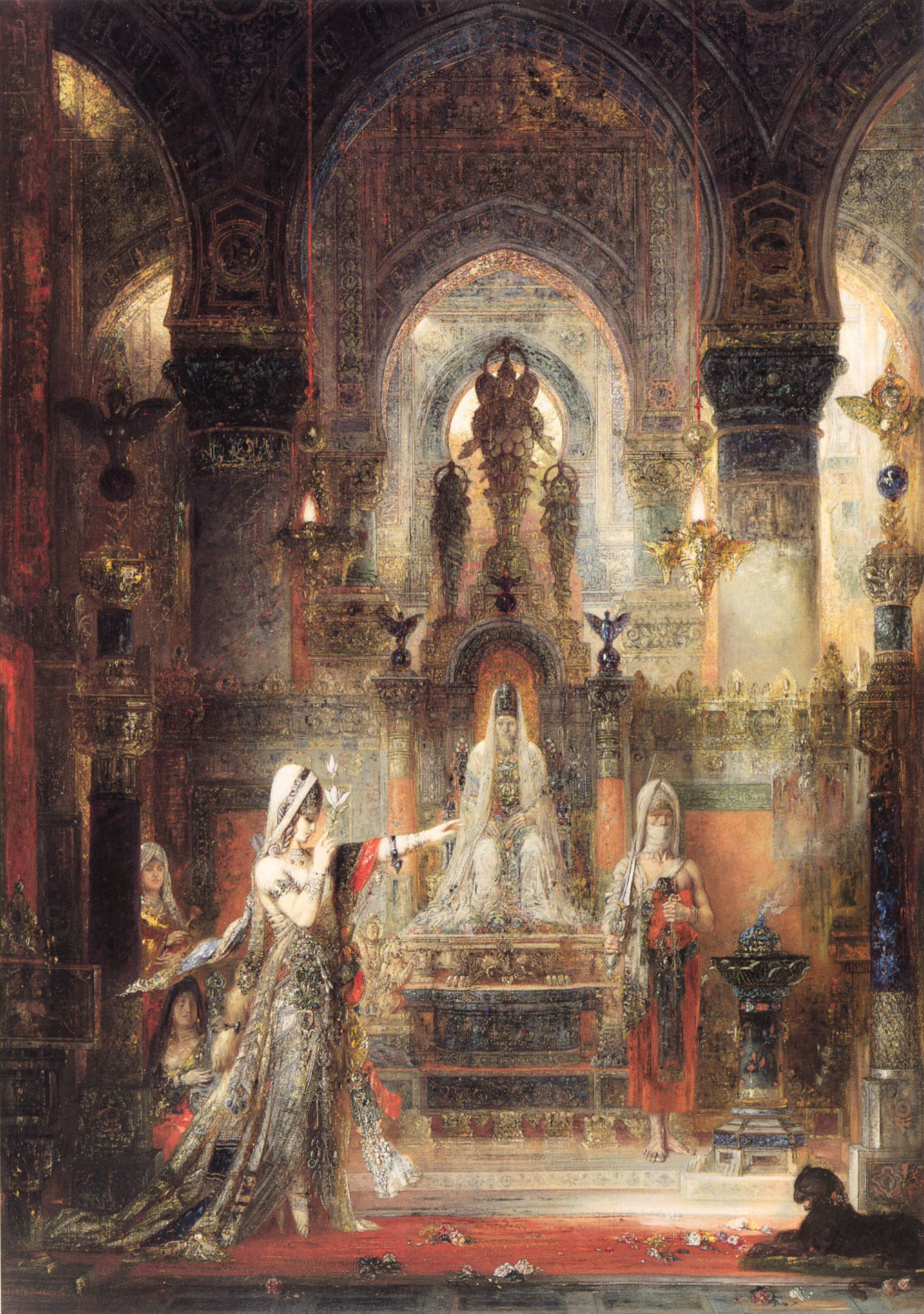The art of Gustave Moreau stands apart from that of his realist and impressionist contemporaries in nineteenth-century France, particularly in the mystical and enigmatic quality of his paintings of biblical and mythological subjects. He is considered an important precursor to the symbolist and surrealist movements, and his students included Henri Matisse and Georges Rouault. Salome created a sensation when it was exhibited for the first time in Paris at the Salon of 1876 and is arguably Moreau’s most important work. Painted between 1874 and 1876, it depicts the biblical story of the Judaean princess Salome dancing before her stepfather, King Herod, and her mother, Herodias. In his 1884 novel À rebours Frenchman Joris-Karl Huysmans describes the depiction of Salome in Moreau's painting: "No longer was she merely the dancing-girl who extorts a cry of lust and concupiscence from an old man by the lascivious contortions of her body; who breaks the will, masters the mind of a King by the spectacle of her quivering bosoms, heaving belly and tossing thighs; she was now revealed in a sense as the symbolic incarnation of world-old Vice, the goddess of immortal Hysteria, the Curse of Beauty supreme above all other beauties by the cataleptic spasm that stirs her flesh and steels her muscles, - a monstrous Beast of the Apocalypse, indifferent, irresponsible, insensible, poisoning."




Salome Dancing Before Herod
oil on canvas • 103.5 x 144 cm
 Gustave Moreau
Gustave Moreau